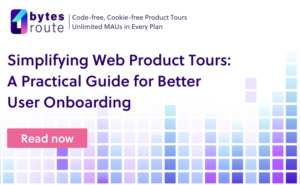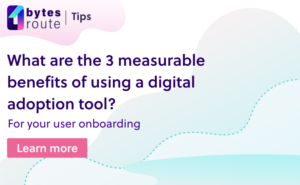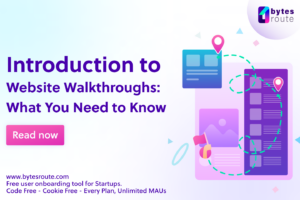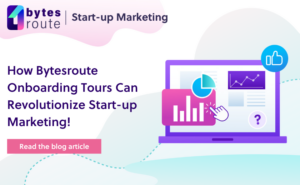Imagine being pushed into a swimming pool, full of water, not knowing how to swim. Chances are you’re scared of drowning. How do you react? Will you immediately start swimming, or will you drown instead, while trying to swim hopelessly to save your life?
I know my answer! And I think it applies to most of us, too.
And when it comes to the products we use every day, sometimes it feels like we’re in that pool, not knowing how to swim. This is why I used this example to talk about Bytes Route.
Bytes Route is that one friend that is great at swimming and gives you the confidence to learn and improve your swimming skills, without making you feel embarrassed about not knowing. It gives simple explanations, right to the point without too much hassle or preparation before.
Basically, for me as a Product Manager, Bytes Route is the assistant tool that helps me with the feature onboarding and adoption of my product.
Here, I created a visual legend that depicts the above scenario:
| The pool | Product and its features that need onboarding |
| The person with no swimming skills | Your customer who is not familiar with your new features |
| That friend who teaches you how to swim | Bytes Route – it helps you with product onboarding and increases the feature adoption rate |

By looking at the picture above, I can already start to feel the anxiousness of a new user who is completely unaware of the product changes you implemented within your app.
And now comes the problem!
Product Adoption: Product-focused vs Customer-focused
Product adoption: the process users go through to learn about your product, recognize its value, and continue to use it on a regular basis.
As a product manager, you and the dev team put time, effort (and money) into implementing and developing new features. Finally, the product is ready to be released. And live it goes! And you wait….time passes and still nothing, zero, nil, nought, zip, diddly-squat, zilch…
Not even a breadcrumb of feedback.
The feature you implemented has not yet been used (we call that adopted).
That happens due to various reasons – but the most prominent one is that you have been focusing on developing the product (and I bet your product is useful and worth using) but yet there is one thing uncovered: YOUR USERS.
Don’t get me wrong, being a product-focused organization is not wrong, but it is not enough – especially if you are just starting out on your journey (i.e. a startup). There’s that other half missing: the customer-focused one.
I think, in an organization, those two components should complement and not exclude each other.
Product-focused: developing a product that you believe is appropriate for the market in which you are active – more specifically, you aim to create the best product available on the market by following a detailed roadmap.
Customer-focused: identifying your user’s pain points, needs, and wants and then developing the product – basically you aim to develop the best solutions for your customers that align to your organization.
What is Feature Adoption?
Now that we see the difference between a product and a customer-focused organization, let’s talk about feature adoption. It is closely related to these terms and, more importantly, to the customer-focus part.
In contrast to product adoption, which evaluates how your customers focus on and begin using your product to achieve their objectives, feature adoption measures how users utilize certain features of a software product.
If we turn to our swimming pool analogy, the user wants to go swimming but is unable to because he lacks swimming skills.
The question is how can we help him? The obvious answer is that we need to teach him.
That is exactly what we need here – we need that one friend who teaches everyone how swimming works.
Basically, we need proper onboarding for our new product’s features.
The more your users are properly onboarded and engaged with your new features, the more likely it is to increase the adoption rate of that feature.
How to Increase Feature Adoption?
There are a variety of strategies for increasing the adoption rate of a product’s features, but they are all based on the same principle: the better a user knows your product’s capabilities, the more likely it is that they will stick with them for the long run.
Top 3 strategies for improving the feature adoption rate
1. Develop useful and valuable features
The first and most important one is to make sure you develop a useful and valuable feature. Remember what we said above – product and customer components should complement each other. Don’t just focus on providing the best solutions for customers but also make features practical and useful. Remember, you have the technology and the knowledge to implement it, your customers only know their needs and don’t necessarily have the solution’s vision.
“If you had asked people what they wanted, they would have said a faster horse.” – Henry Ford
2. Have your new features and your users on the same page.
Announcing the new features and just expecting them to be adopted clearly won’t work. Your users should always be up-to-date with the latest changes.
- Educated
- Onboarded, and
- Trained with new materials, guides, and practical use cases.
Here are a few examples of materials and content support that should be developed every time a new feature is launched:
2.1. Communication Content
The first thing you need to have in mind when launching a new feature is communication. If your notifications or emails aren’t clear and concise, it’s likely that your features won’t even be noticed. There are numerous ways to successfully inform your users about changes –, but newsletters and release notes are absolutely necessary.
I’ll use Notion as an example, which happens to be one of my favorite task tracking platforms.
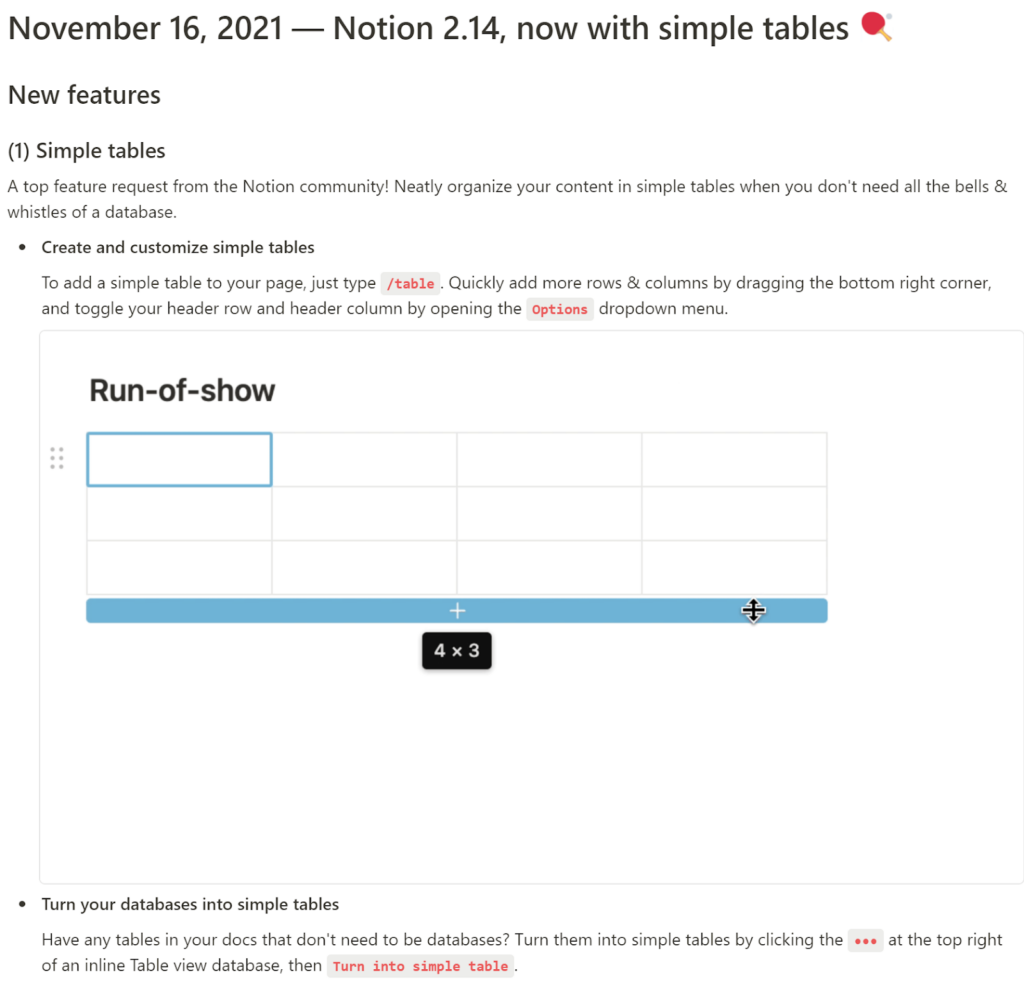
2.2. Educational Content
When launching a new feature, make sure your users get the know-how of the solution you are offering through that feature. Educational content lets you connect with your users by offering value and asking for nothing in return.
Think of educational materials as the answers to these questions:
- Why do you need this feature?
- What is that feature all about?
- How is this new feature resolving a particular job?
By answering these questions, you gain your user’s trust and confidence knowing they can rely on you whenever they need a solution.
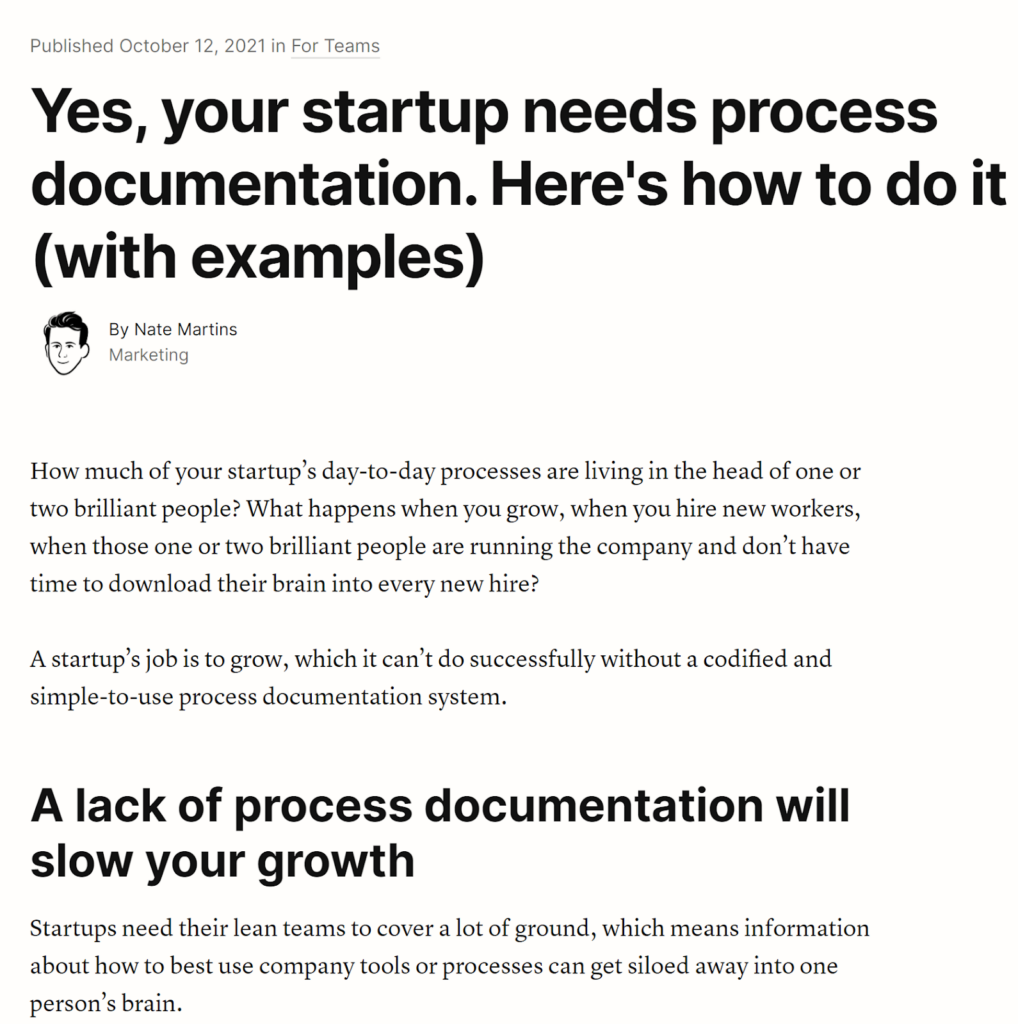
2.3. Training Content
Once your audience has reached a good level of understanding of the newly developed feature, it is time to make sure they know how to use it properly. For this, we need training and the how-to types of content.
3. Using a Digital Adoption Solution
The third strategy and, in my opinion, the most effective one, is enhancing every piece of onboarding effort by using a digital adoption solution.
A digital adoption solution is a software that enables in-app learning and is designed to help new users quickly become proficient in a program while also educating existing users on the application’s latest features and functionalities.
Basically, you can automatically notify and onboard your users with in-app guided tours every time you release or update a new feature.
Compared to the second strategy, which is having your features and your users on the same page, (with the same goal – increasing the adoption rate of your feature), in-app guided tours have unmatched engaging capabilities and provide measurable results.
I think it’s good to know what are the benefits of using a product guided tour:
- They are very easy to maintain – you just create the tour, update when needed and enable it within your app;
- It provides real-time training, on the spot at the exact time your users are performing a task
- It reduces the length of the learning curve;
- Centralized content: all the content we have talked about can be found in one single place – your app;
Here’s a screenshot of how an in-app guided tour looks like:
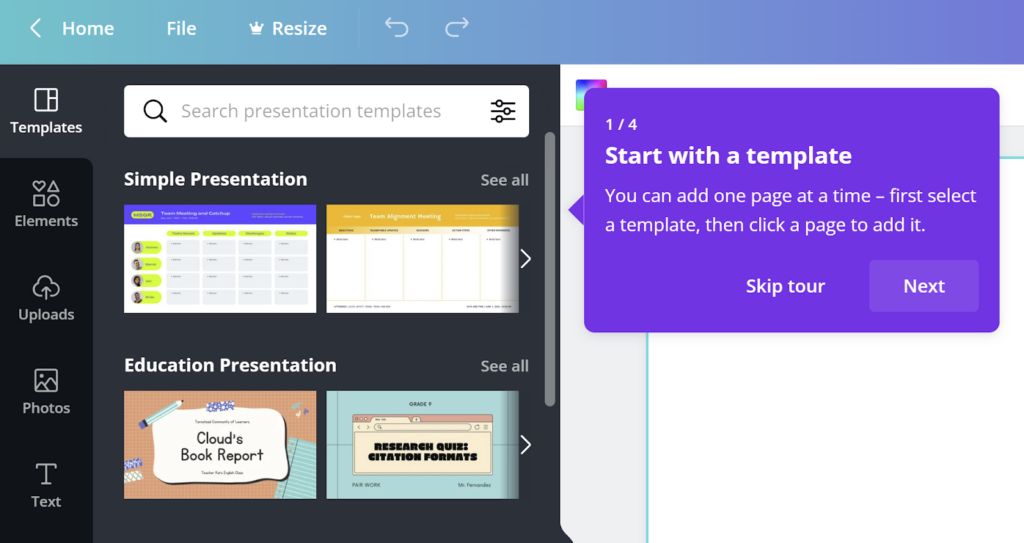
How to Increase the Feature Adoption Rate Through Digital Adoption Solutions?
Bytes Route is a digital adoption solution that focuses on providing a high-quality, straightforward web app onboarding experience for your users.
Or, if we go back to our swimming analogy, you can think of Bytes Route as that friend that teaches and helps you become an expert swimmer when navigating through the product pool.
According to Gartner, it’s estimated that 70% of organizations will use digital adoption solutions across the entire technology stack to overcome the insufficient application of user experiences by 2025.
If you want to check what other digital adoption solutions are available on the market, check this article: Top 5+1 tools for creating product tours.
Why using a digital adoption platform is a secret weapon/helps you and your business?
Digital Adoption solutions provide important advantages to users in order to encourage their adoption:
- Scalable: It helps you address all your users instantly and serve as many product tours as you evaluate to t be suitable.
- Efficiency: It reduces the effort you and your team has to put in creating materials to support the onboarding process
- Accessibility: It provides in-app, easy access for your users to access the feature
- Competitive-driven: Investing in digital technologies makes you stay competitive and ahead of the competition
Being a codeless tool, Bytes Route allows non-tech people to provide in-app guides and tooltips for a smooth onboarding experience.
It enables you to have an ongoing onboarding process, assisting you in raising the retention rate of your product features.
Feature adoption: It is not mission impossible
When you internalize that feature adoption is highly correlated with a positive onboarding experience, the journey of your product together with your users just started. Take that as a KPI – the number of features you’re sure your users know.
I hope you found this article helpful and that it will assist you in increasing the adoption rate of your feature.
PS. Let me know if you have any questions regarding this article and also if you have tried using a digital platform solution within your organization.
